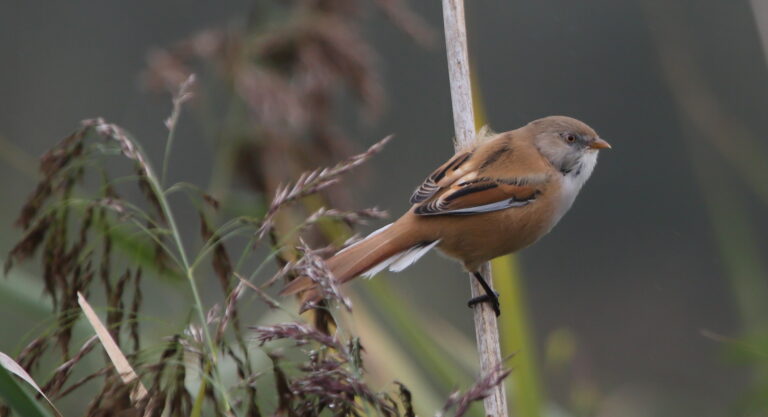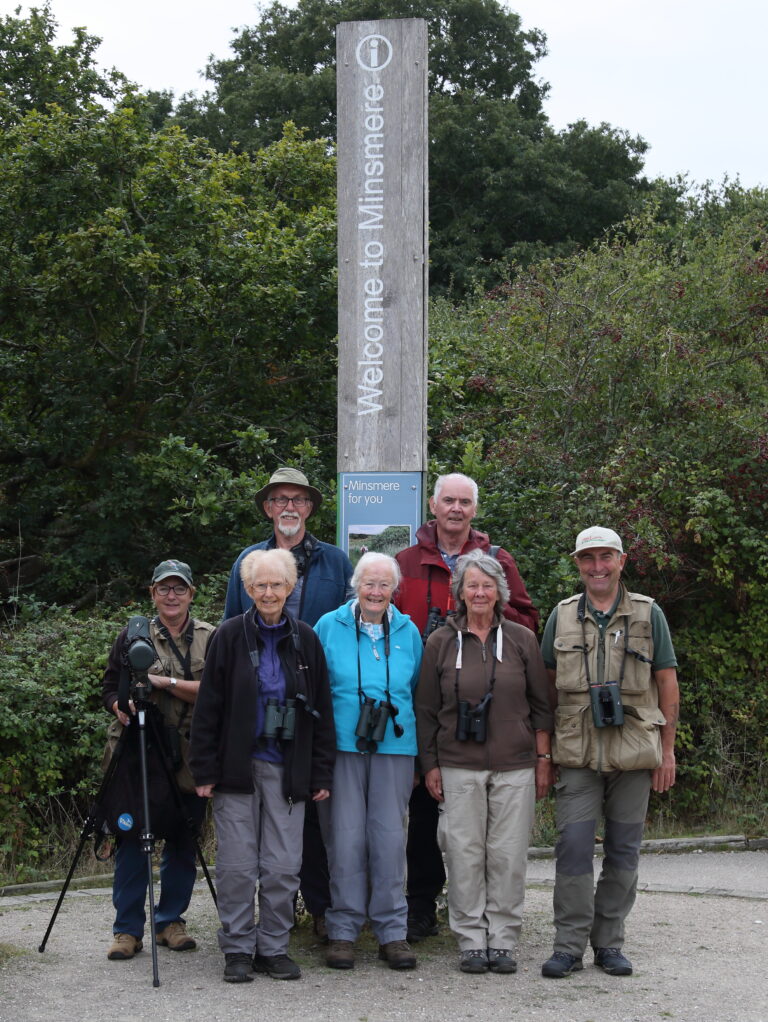
We begin at Cavenham Heath where the first bird is a Red Kite, followed by a Kestrel, a Grey Wagtail beside the River Lark, Stonechats on the heather, and best of all, a Woodlark in a circular song flight above the purple heath. Moving on to the nearby Lackford Lakes nature reserve, we find Egyptian Geese sleeping below numerous House Martins, with loads of Gadwall and Teal, five Snipe feeding out in plain sight and a very friendly Robin. Back at the visitor centre, a Sparrowhawk dashes past the feeders.
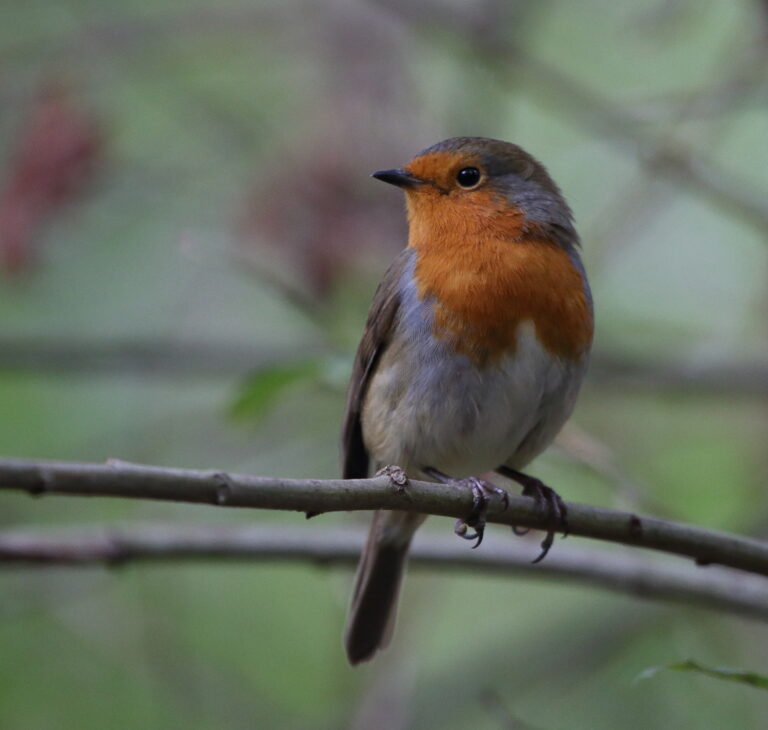
Our ‘Special K’ breakfast this morning includes Kestrel, Kingfisher and SparrowhawK outside the hotel dining room overlooking the River Waveney. Once on the road we begin at Dunwich Heath, and after just a short stroll we soon have our target Dartford Warbler posing nicely in the scope; mission accomplished!
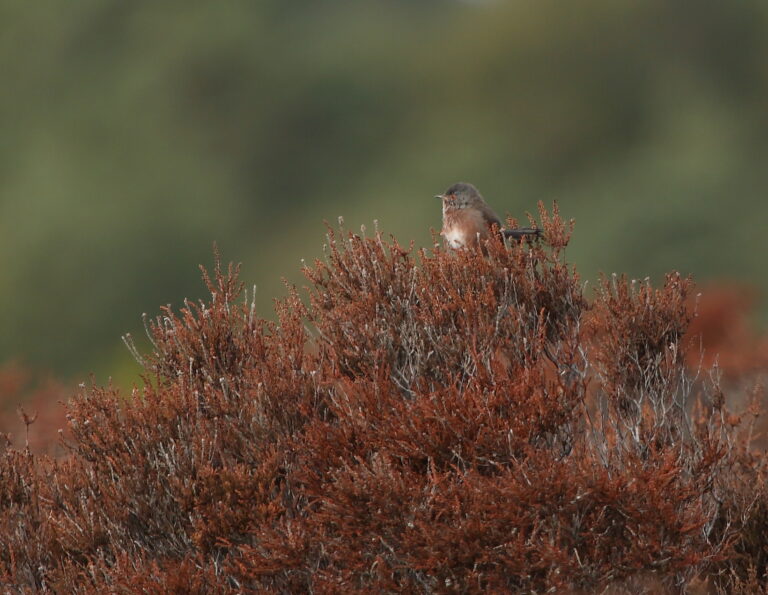
Moving on to the nearby Minsmere RSPB reserve, we watch several Marsh Harriers and a couple of Great Egrets from the Bittern hide, where a rufous juvenile Cuckoo sitting on a post is an unexpected bonus. A bit further on, the Island Mere hide provides super views of pinging Bearded Tits perched high in the nearby reeds, along with a Buzzard, a rust-stained Whooper Swan, a couple of Little Egrets and around a dozen Barnacle Geese amongst the larger Greylags. On the way back to the visitor centre a beautifully marked, well camouflaged Adder, coiled up in the dead grasses below a hawthorn bush is a very lucky find thanks to a kindly stranger.
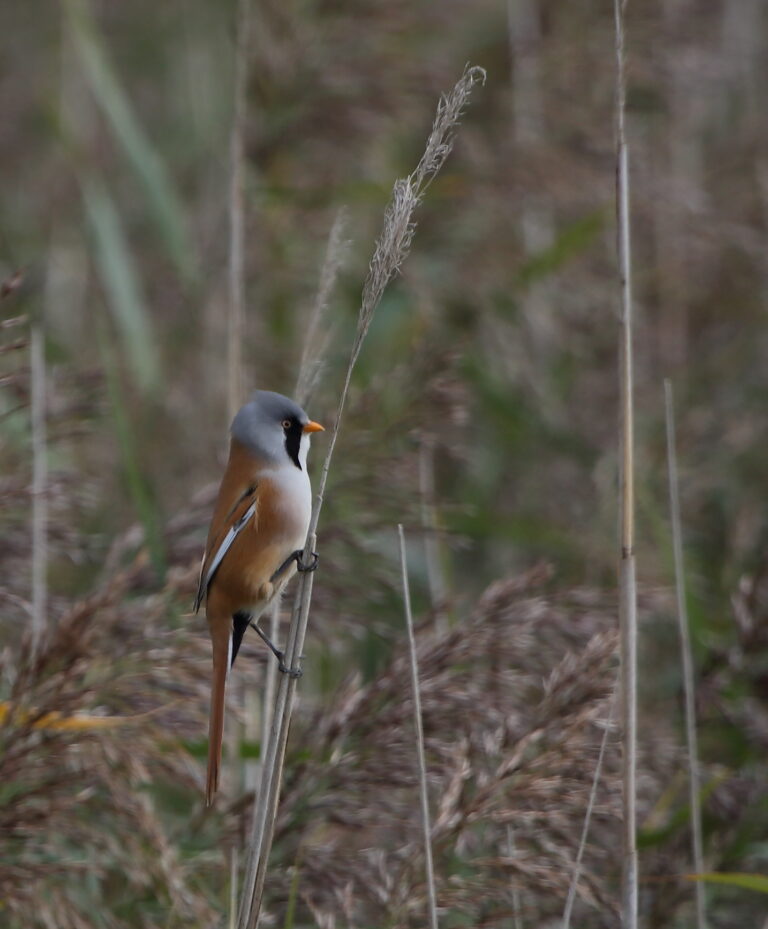
After lunch back at the visitor centre we count two, no three, then four and finally five Hobbies hawking over the car park, while the welcoming party outside the visitor centre includes a posing Spotted Flycatcher plus Coal and Marsh Tits on the feeders. On a circuit of the famous scrape, we spot two Muntjac Deer feeding quietly among the bushes near the North hide, but the scrape itself is unusually quiet due to drainage for work by heavy machinery and so the only waders here are a Lapwing, a couple of Dunlin, a trio of Black-tailed Godwits and four Avocets.
Following afternoon tea back at the visitor centre, we visit nearby Southwold, hoping to find a recently reported Red-backed Shrike alongside the River Blyth, but with no sign of it we make do with another Kingfisher and close views of a Little Egret, oblivious to its audience while busy fishing in the creek.
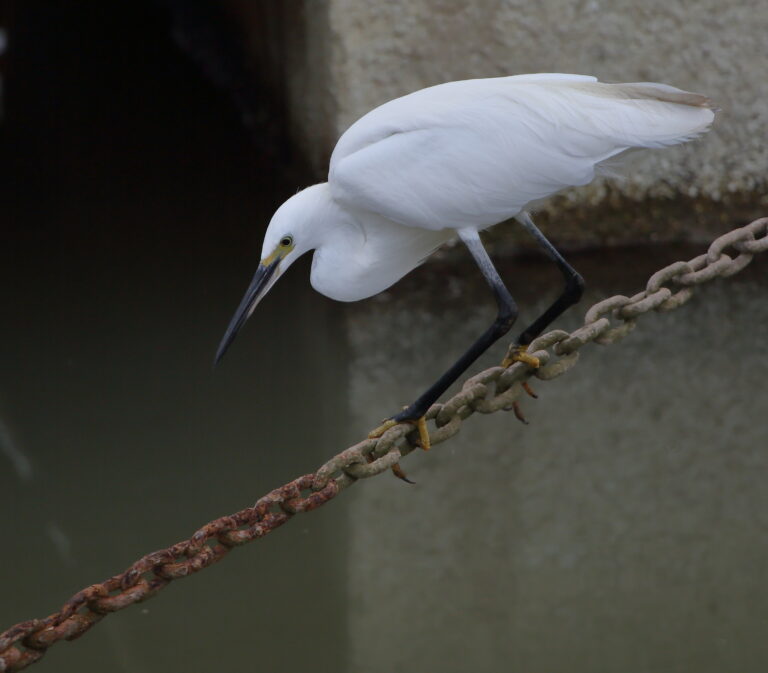
This morning we cross the border into Norfolk, where our first stop is at Potter Heigham church where we find a Treecreeper in the woods, but nothing from the hide thanks to a man vigorously strimming right in front of it! At the nearby Hickling Broad National Nature Reserve, we begin with fleeting glimpses of Kingfisher and Cetti’s Warbler and then a Great Spotted Woodpecker in the scope. During a lunch break in the next hide, a Snipe shows very well, and from the next viewpoint overlooking the extensive Hickling Broad, we spot several Mediterranean Gulls, while a Bittern flies sedately across the open water showing all its lovely golden-brown plumage. What fabulous timing! The next observation point produces great views of two male Bearded Tits posing in the reed tops, while a Hobby circles after dragonflies overhead. Moving on to the Bittern hide, hundreds of Swallows pass by and we spot a Peregrine perched in the skeletal remains of one of several dead trees, but with no sign of the recently seen Red-footed Falcon, our raptor count currently remains on seven; not bad after just three days.
News of a Grey Phalarope on a specific pool along the ‘Iron Road’ at Salthouse seems like too good an opportunity to miss, so we head for the north coast and sure enough we find this cute little rarity in a very obliging location beside the track, repeatedly pecking away at ‘flies’ on the surface of the pond, while showing off its clean white and pale grey non-breeding plumage. We also find a male Ruff on the pond and in the shrubbery along the track, a humungous Four-spot Orb-weaver, Britain’s heaviest spider! With the phalarope ‘in the bag’ we head for the shingle beach and enjoy scope views of Guillemots in winter plumage and two Red-throated Divers, still in breeding plumage, and fishing close enough to the beach to show their deep red throats.
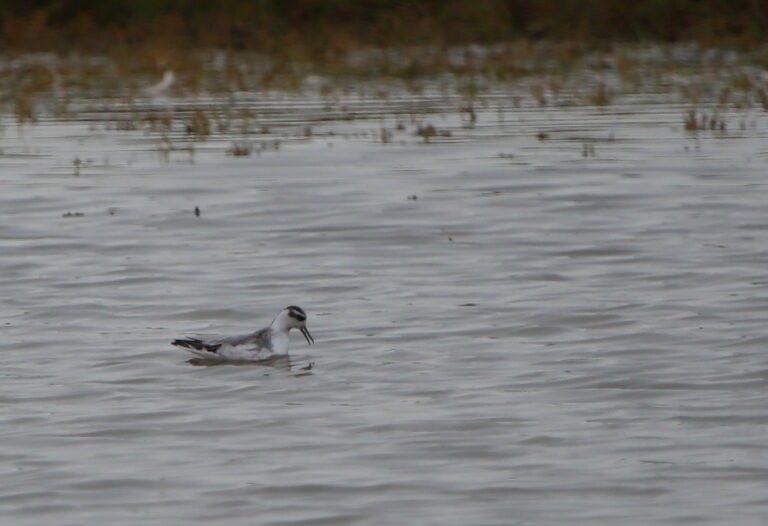
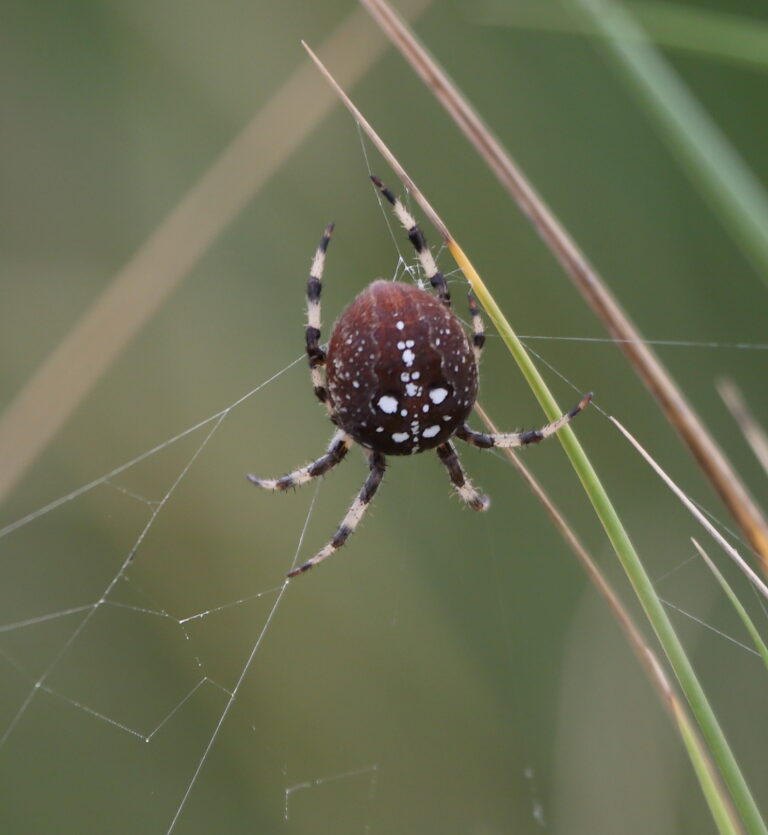
This morning we begin at the famous Cley Marshes nature reserve, where the site of a big yellow digger makes my heart sink. Sure enough, the recently remodelled scrapes in front of the hides in the heart of the reserve are unusually quiet, with only six Dunlin and a slightly larger, cleaner-looking Curlew Sandpiper. The surrounding reeds are alive with restless small flocks of Bearded Tits and yet again we manage to pinpoint a pair sitting in the tops of the reeds, while hundreds of equally restless Pink-footed Geese repeatedly rise from the field adjacent to the visitor centre. Moving on to the Bishop hide we spot several male Ruff with orange bills and legs and smart white heads, and our first Common Gull.
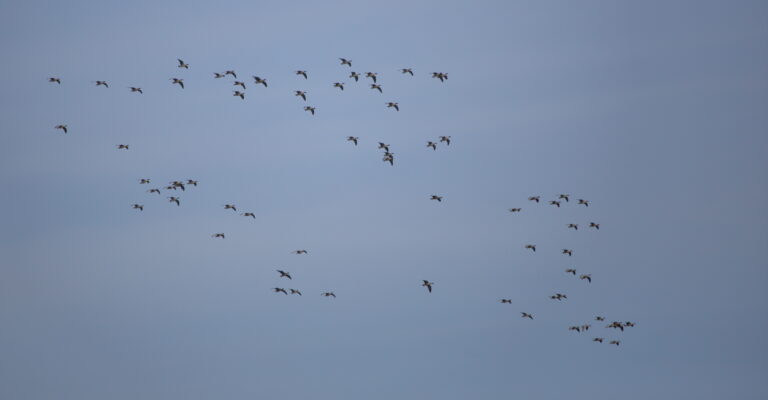
After morning coffee back at the visitor centre, on a stroll along the East Bank, accompanied by the pinging of more Bearded Tits, this time hidden in the reeds, we find plenty of Black-tailed Godwits, a few Curlew and Snipe and a very obliging Little Stint standing still in a small channel alongside the bank, close enough to show every detail of its finely marked plumage. Other new birds here include a snoozing female Pintail, a Greenshank sleeping alongside a row of Avocets and a small flock of Linnets. The sudden appearance of a Peregrine sends everything into a panic, but they needn’t have worried as it was already carrying prey, possibly a hapless Dunlin. From the beach we spot another Red-throated Diver and on the return along the bank, a juvenile Little Ringed Plover is another new bird for the ever-growing list.
This afternoon we head west along the coast, making a brief stop at a small wetland near Wells-next-the-Sea, where we find a Red Kite and a couple of Marsh Harriers, along with views of several Spoonbills, in flight and also resting out on the salt marsh. We also add a Brown Hare and a Wall Butterfly to the trip list here.
We spend the rest of the afternoon at the Titchwell Marsh RSPB reserve, teeming with hundreds of Teal and Black-tailed Godwits and numerous Ruff, all busy feeding, while a sizeable flock of Golden Plovers are simply resting on a mud bank. As well as more Avocets and another Spoonbill, we get great views of a Water Rail, quietly moving along the edge of the reeds just to the right of the Island hide. Further along the sea wall which runs alongside the marsh, the waderfest continues with plenty of Dunlin and Redshanks, plus a couple of Curlew Sandpipers, a Ringed Plover, another Little Stint and a Spotted Redshank, and once the marsh becomes more brackish, the Black-wits are joined by Bar-tailed Godwits. At the end of the sea wall, we also find plenty of Oystercatchers, along with a few Sanderling and Turnstones, with yet another Red-throated Diver off shore.
It’s the Autumnal equinox and a mellow mist has descended on the Lakenheath Fen RSPB reserve where a female Mallard gate crashes the visitor centre! I wonder if she is a paid-up member. Along the trail we find a balloon-sized puffball, a furtive Cetti’s Warbler, an obliging female Bearded Tit and Great and Little Egrets, plus Buzzard, Kestrel, Marsh Harrier and two Hobbies. With three new birds for the list today (Green Sandpiper, Stock Dove and Greenfinch) we end up with 104 different birds, including seven raptors and 21 waders, with fantastic views of star birds like Red-throated Diver, Bittern, Spoonbill, Water Rail, Cuckoo, a singing Woodlark, Spotted Flycatcher, Dartford Warbler, several Bearded Tits, and of course, the rare Grey Phalarope.
